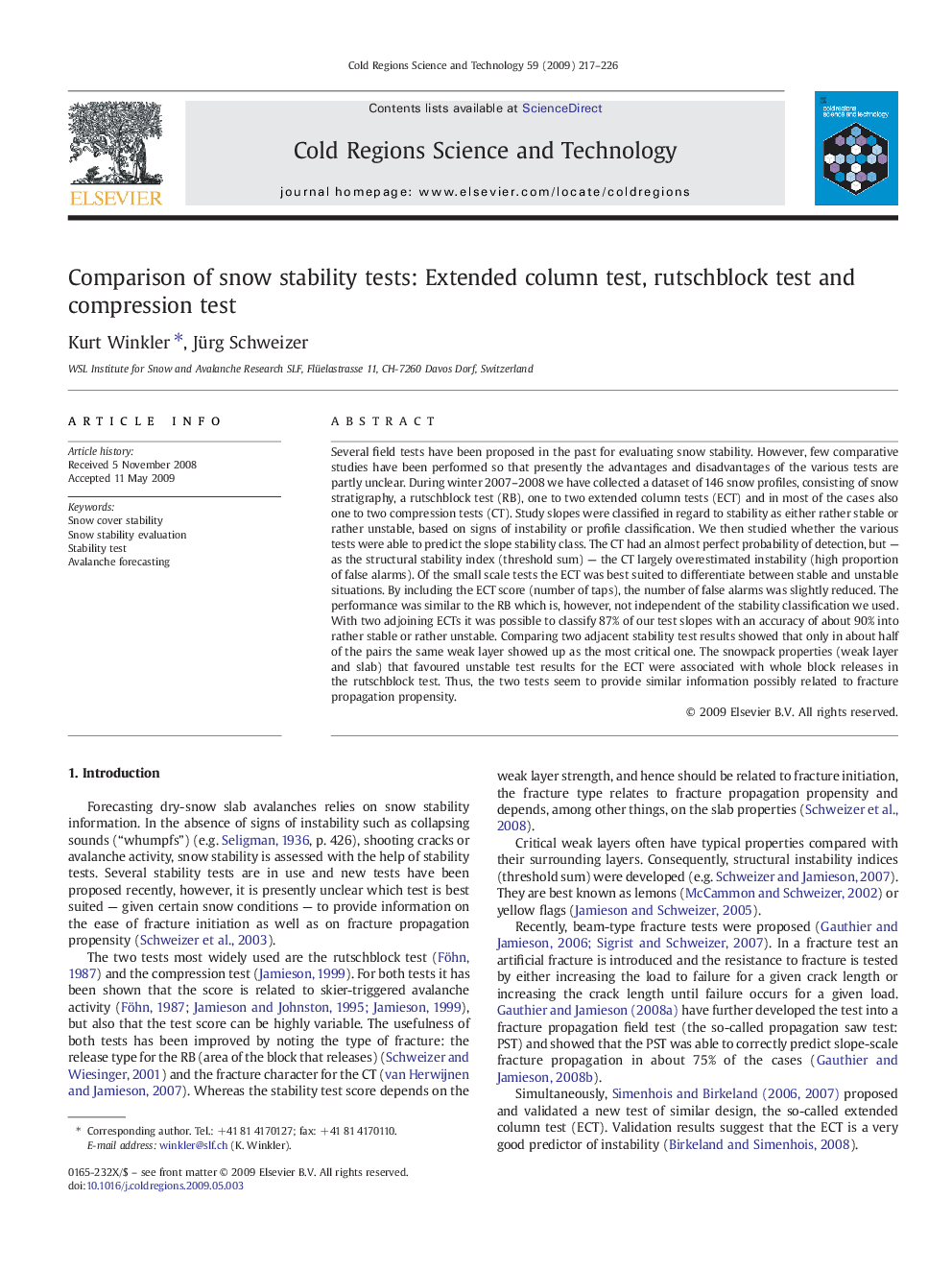| Article ID | Journal | Published Year | Pages | File Type |
|---|---|---|---|---|
| 4676401 | Cold Regions Science and Technology | 2009 | 10 Pages |
Several field tests have been proposed in the past for evaluating snow stability. However, few comparative studies have been performed so that presently the advantages and disadvantages of the various tests are partly unclear. During winter 2007–2008 we have collected a dataset of 146 snow profiles, consisting of snow stratigraphy, a rutschblock test (RB), one to two extended column tests (ECT) and in most of the cases also one to two compression tests (CT). Study slopes were classified in regard to stability as either rather stable or rather unstable, based on signs of instability or profile classification. We then studied whether the various tests were able to predict the slope stability class. The CT had an almost perfect probability of detection, but — as the structural stability index (threshold sum) — the CT largely overestimated instability (high proportion of false alarms). Of the small scale tests the ECT was best suited to differentiate between stable and unstable situations. By including the ECT score (number of taps), the number of false alarms was slightly reduced. The performance was similar to the RB which is, however, not independent of the stability classification we used. With two adjoining ECTs it was possible to classify 87% of our test slopes with an accuracy of about 90% into rather stable or rather unstable. Comparing two adjacent stability test results showed that only in about half of the pairs the same weak layer showed up as the most critical one. The snowpack properties (weak layer and slab) that favoured unstable test results for the ECT were associated with whole block releases in the rutschblock test. Thus, the two tests seem to provide similar information possibly related to fracture propagation propensity.
